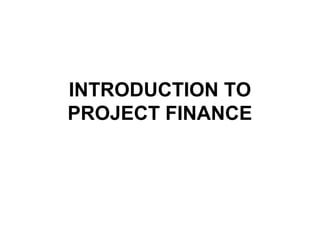Project finance involves investing in large industrial or infrastructure projects through a legally independent project company financed primarily with debt. It creates value through its organizational, contractual, and governance structures. The organizational structure addresses agency costs and risk contamination by separating the project from sponsors' balance sheets. Contractual structures allocate risk to parties best able to manage it, lowering overall risk costs. Governance relies on debt covenants to monitor management.































































































































